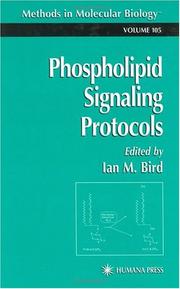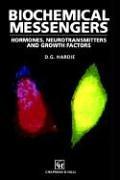| Listing 1 - 9 of 9 |
Sort by
|
Book
Abstract | Keywords | Export | Availability | Bookmark
 Loading...
Loading...Choose an application
- Reference Manager
- EndNote
- RefWorks (Direct export to RefWorks)
Stomata, the tiny pores on leaf surface, are the gateways for CO2 uptake during photosynthesis as well as water loss in transpiration. Further, plants use stomatal closure as a defensive response, often triggered by elicitors, to prevent the entry of pathogens. The guard cells are popular model systems to study the signalling mechanism in plant cells. The messengers that mediate closure upon perception of elicitors or microbe associated molecular patterns (MAMPs) are quite similar to those during ABA effects. These components include reactive oxygen species (ROS), nitric oxide (NO), cytosolic pH and intracellular Ca2+. The main components are ROS, NO and cytosolic free Ca2+. The list extends to others, such as G-proteins, protein phosphatases, protein kinases, phospholipids and ion channels. The sequence of these signalling components and their interaction during stomatal signalling are complex and quite interesting. The present e-Book provides a set of authoritative articles from ‘Special Research Topic’ on selected areas of stomatal guard cells. In the first set of two articles, an overview of ABA and MAMPs as signals is presented. The next set of 4 articles, emphasize the role of ROS, NO, Ca2+ as well as pH, as secondary messengers. The next group of 3 articles highlight the recent advances on post-translational modification of guard cell proteins, with emphasis on 14-3-3 proteins and MAPK cascades. The last article described the method to isolate epidermis of grass species and monitor stomatal responses to different signals. Our e-Book is a valuable and excellent source of information for all those interested in guard cell function as well as signal transduction in plant cells.
ABA --- Methyl Jasmonate --- Reactive Oxygen Species --- innate immunity --- Proteomics --- Epidermis --- Nitric Oxide --- Protein phosphorylation --- secondary messengers --- elicitors
Book
Abstract | Keywords | Export | Availability | Bookmark
 Loading...
Loading...Choose an application
- Reference Manager
- EndNote
- RefWorks (Direct export to RefWorks)
Stomata, the tiny pores on leaf surface, are the gateways for CO2 uptake during photosynthesis as well as water loss in transpiration. Further, plants use stomatal closure as a defensive response, often triggered by elicitors, to prevent the entry of pathogens. The guard cells are popular model systems to study the signalling mechanism in plant cells. The messengers that mediate closure upon perception of elicitors or microbe associated molecular patterns (MAMPs) are quite similar to those during ABA effects. These components include reactive oxygen species (ROS), nitric oxide (NO), cytosolic pH and intracellular Ca2+. The main components are ROS, NO and cytosolic free Ca2+. The list extends to others, such as G-proteins, protein phosphatases, protein kinases, phospholipids and ion channels. The sequence of these signalling components and their interaction during stomatal signalling are complex and quite interesting. The present e-Book provides a set of authoritative articles from ‘Special Research Topic’ on selected areas of stomatal guard cells. In the first set of two articles, an overview of ABA and MAMPs as signals is presented. The next set of 4 articles, emphasize the role of ROS, NO, Ca2+ as well as pH, as secondary messengers. The next group of 3 articles highlight the recent advances on post-translational modification of guard cell proteins, with emphasis on 14-3-3 proteins and MAPK cascades. The last article described the method to isolate epidermis of grass species and monitor stomatal responses to different signals. Our e-Book is a valuable and excellent source of information for all those interested in guard cell function as well as signal transduction in plant cells.
ABA --- Methyl Jasmonate --- Reactive Oxygen Species --- innate immunity --- Proteomics --- Epidermis --- Nitric Oxide --- Protein phosphorylation --- secondary messengers --- elicitors
Book
Abstract | Keywords | Export | Availability | Bookmark
 Loading...
Loading...Choose an application
- Reference Manager
- EndNote
- RefWorks (Direct export to RefWorks)
Stomata, the tiny pores on leaf surface, are the gateways for CO2 uptake during photosynthesis as well as water loss in transpiration. Further, plants use stomatal closure as a defensive response, often triggered by elicitors, to prevent the entry of pathogens. The guard cells are popular model systems to study the signalling mechanism in plant cells. The messengers that mediate closure upon perception of elicitors or microbe associated molecular patterns (MAMPs) are quite similar to those during ABA effects. These components include reactive oxygen species (ROS), nitric oxide (NO), cytosolic pH and intracellular Ca2+. The main components are ROS, NO and cytosolic free Ca2+. The list extends to others, such as G-proteins, protein phosphatases, protein kinases, phospholipids and ion channels. The sequence of these signalling components and their interaction during stomatal signalling are complex and quite interesting. The present e-Book provides a set of authoritative articles from ‘Special Research Topic’ on selected areas of stomatal guard cells. In the first set of two articles, an overview of ABA and MAMPs as signals is presented. The next set of 4 articles, emphasize the role of ROS, NO, Ca2+ as well as pH, as secondary messengers. The next group of 3 articles highlight the recent advances on post-translational modification of guard cell proteins, with emphasis on 14-3-3 proteins and MAPK cascades. The last article described the method to isolate epidermis of grass species and monitor stomatal responses to different signals. Our e-Book is a valuable and excellent source of information for all those interested in guard cell function as well as signal transduction in plant cells.
ABA --- Methyl Jasmonate --- Reactive Oxygen Species --- innate immunity --- Proteomics --- Epidermis --- Nitric Oxide --- Protein phosphorylation --- secondary messengers --- elicitors

ISBN: 0896034917 0585242208 9786610830480 1280830484 1592592554 1489942602 Year: 1998 Publisher: Totowa, NJ : Humana Press : Imprint: Humana,
Abstract | Keywords | Export | Availability | Bookmark
 Loading...
Loading...Choose an application
- Reference Manager
- EndNote
- RefWorks (Direct export to RefWorks)
In Phospholipid Signaling Protocols, state-of-the-art techniques for monitoring the major lipid and phospholipid-derived second messenger pathways to identify and quantify pathway activation are detailed by experts intimately experienced in their use. The assays described cover all the major phospholipases (C, D, A2), as well as sphingomyelinase and its associated metabolites. Additional protocols are provided for the assay of phosphoinositide 3-, 4-, and 5-kinase and sphingosine kinase activity, and for the quantification, separation, and rigorous identification of phospholipids, diacylglycerol, and sphingolipids, as well as their metabolites, including phosphoinositols, choline metabolites, and fatty acid metabolites. In addition, there is extensive information on the extraction, size separation, detection, and quantification of cellular signaling proteins and corresponding mRNA, as well as a description of their localization by immunohistochemistry and immunocytochemistry. Phospholipid Signaling Protocols offers a wide-ranging collection of cutting-edge techniques for the study of signal transduction through phospholipid intermediates and their metabolites. The book is an indispensable reference for both the newcomer and the experienced researcher seeking to expand knowledge of these critical pathways, and strongly complements its companion volumes-R.A.J. Challiss' Receptor Signal Transduction Protocols, D. Bar-Sagi's, Transmembrane Signaling Protocols, and D. A. Kendall and S.J. Hill's Signal Transduction Protocols-in building a unique library of tried-and-tested protocols relating to the ever expanding signal transduction field.
Cellular signal transduction --- Membrane lipids --- Phospholipids --- Second messengers (Biochemistry) --- Research --- Methodology. --- Second messenger systems (Biochemistry) --- Secondary messengers (Biochemistry) --- Phosphatides --- Phosphates --- Membranes (Biology) --- Lipids --- Cellular information transduction --- Information transduction, Cellular --- Signal transduction, Cellular --- Bioenergetics --- Cellular control mechanisms --- Information theory in biology --- Biochemistry. --- Biochemistry, general. --- Biological chemistry --- Chemical composition of organisms --- Organisms --- Physiological chemistry --- Biology --- Chemistry --- Medical sciences --- Composition

ISBN: 0412076810 1461377412 1461559812 Year: 1997 Publisher: New York : Chapman & Hall,
Abstract | Keywords | Export | Availability | Bookmark
 Loading...
Loading...Choose an application
- Reference Manager
- EndNote
- RefWorks (Direct export to RefWorks)
In the past few years there has been the increased recognition that the effects of oxidative stress are not limited to the damage of cellular constituents. There is now evidence that reactive oxygen species (ROS) can alter cell function by acting upon the intermediates, or second messengers, in signal transductions. Such effects on signaling mechanisms probably account for the role of oxidative stress in inflammation, aging, and cancer. This volume brings together internationally recognized researchers in both the major areas covered by the book, oxidative stress and signal transduction. The work is organized in three sections. The first deals with the immediate cellular responses to oxidative stress and the production of second messengers. The second details the connection between second messengers and the gene. The third part looks more closely at the level of the gene.
Oxidative Stress. --- Signal Transduction. --- Second Messenger Systems. --- Gene Expression Regulation. --- Active oxygen in the body --- Stress (Physiology) --- Cellular signal transduction. --- Second messengers (Biochemistry) --- Genetic regulation. --- Oxygène actif dans l'organisme --- Stress --- Transduction du signal cellulaire --- Seconds messagers (Biochimie) --- Régulation génétique --- Oxidative stress --- Pathophysiology. --- Second messengers (Biochemistry). --- Oxygène actif dans l'organisme --- Régulation génétique --- Biochemistry. --- Pharmacology. --- Animal physiology. --- Biochemistry, general. --- Pharmacology/Toxicology. --- Animal Physiology. --- Animal physiology --- Animals --- Biology --- Anatomy --- Drug effects --- Medical pharmacology --- Medical sciences --- Chemicals --- Chemotherapy --- Drugs --- Pharmacy --- Biological chemistry --- Chemical composition of organisms --- Organisms --- Physiological chemistry --- Chemistry --- Physiology --- Physiological effect --- Composition --- Second messenger systems (Biochemistry) --- Secondary messengers (Biochemistry) --- Cellular signal transduction --- Gene expression --- Gene expression regulation --- Gene regulation --- Biosynthesis --- Cellular control mechanisms --- Molecular genetics --- Cellular information transduction --- Information transduction, Cellular --- Signal transduction, Cellular --- Bioenergetics --- Information theory in biology --- Oxidation-reduction reaction --- Regulation
Book
ISBN: 3642346162 3642346170 1283935406 Year: 2013 Publisher: Berlin : Springer,
Abstract | Keywords | Export | Availability | Bookmark
 Loading...
Loading...Choose an application
- Reference Manager
- EndNote
- RefWorks (Direct export to RefWorks)
The book combines general concepts and methods to investigate calcium signalling in cells ranging from molecular biology approaches to manipulation of calcium in living cells. The focus within these methods in on the broad range of fluorescence imaging technology, in particular on optical sectioning techniques and fast image acquisition. In addition to these general guidelines there are application examples in a context beyond calcium signalling in two major fields: investigations of isolated cardiac myocytes and red blood cell related research. While the cellular cardiology section provides snapshots of certain calcium signalling aspects, the red blood cell part presents an overview from the functional identification of calcium-channels to a concept of physiological and pathophysiological relevance.
Calcium -- Analysis. --- Calcium -- Physiological effect. --- Calcium channels. --- Calcium signaling. --- Calcium --- Second messengers (Biochemistry) --- Cellular signal transduction --- Physiological effect --- Research --- Methodology. --- Analysis. --- Cellular information transduction --- Information transduction, Cellular --- Signal transduction, Cellular --- Second messenger systems (Biochemistry) --- Secondary messengers (Biochemistry) --- Medicine. --- Human physiology. --- Cardiology. --- Hematology. --- Cell biology. --- Microscopy. --- Biomedicine. --- Biomedicine general. --- Biological Microscopy. --- Cell Biology. --- Human Physiology. --- Alkaline earth metals --- High-calcium diet --- Bioenergetics --- Cellular control mechanisms --- Information theory in biology --- Cytology. --- Human biology --- Medical sciences --- Physiology --- Human body --- Haematology --- Internal medicine --- Blood --- Cell biology --- Cellular biology --- Biology --- Cells --- Cytologists --- Heart --- Analysis, Microscopic --- Light microscopy --- Micrographic analysis --- Microscope and microscopy --- Microscopic analysis --- Optical microscopy --- Optics --- Clinical sciences --- Medical profession --- Life sciences --- Pathology --- Physicians --- Diseases --- Health Workforce --- Biomedicine, general.

ISBN: 041230340X 0412303507 9401053766 9401131082 9780412303401 9780412303500 Year: 1991 Publisher: London: Chapman and Hall,
Abstract | Keywords | Export | Availability | Bookmark
 Loading...
Loading...Choose an application
- Reference Manager
- EndNote
- RefWorks (Direct export to RefWorks)
General biochemistry --- Cell receptors --- Cellular signal transduction --- Growth factors --- Neurotransmitters --- Paracrine mechanisms --- Peptide hormones --- Second messengers (Biochemistry) --- Cellular information transduction --- Information transduction, Cellular --- Signal transduction, Cellular --- Bioenergetics --- Cellular control mechanisms --- Information theory in biology --- Cell membrane receptors --- Cell surface receptors --- Receptors, Cell --- Binding sites (Biochemistry) --- Cell membranes --- Proteins --- Second messenger systems (Biochemistry) --- Secondary messengers (Biochemistry) --- Hormonal peptides --- Polypeptide hormones --- Hormones --- Peptides --- Functions, Paracrine --- Mechanisms, Paracrine --- Paracrine functions --- Endocrinology --- Chemical nerve transmitters --- Nerve transmitter substances --- Neural transmitters --- Neurohumors --- Neuroregulators --- Synaptic transmitters --- Transmitters, Chemical nerve --- Transmitters, Synaptic --- Neurochemistry --- Neural transmission --- Cell growth factors --- Cellular growth factors --- Growth peptides --- Growth promoting substances --- Growth substances --- Peptide growth factors --- Peptide regulatory factors --- Polypeptide growth factors --- Cytokines --- Cell receptors. --- Cellular signal transduction. --- Growth factors. --- Neurotransmitters. --- Paracrine mechanisms. --- Peptide hormones. --- Second messengers (Biochemistry). --- Cell Communication. --- Growth Substances --- Physiology. --- Physiology --- Cell interaction
Periodical
Abstract | Keywords | Export | Availability | Bookmark
 Loading...
Loading...Choose an application
- Reference Manager
- EndNote
- RefWorks (Direct export to RefWorks)
Receptors, Cell Surface --- Receptors, Drug --- Signal Transduction --- Cell receptors --- Cellular signal transduction --- Récepteurs cellulaires --- Transduction du signal cellulaire --- Periodicals. --- Périodiques --- Receptors, Cell Surface. --- Receptors, Drug. --- Signal Transduction. --- Cell receptors. --- Cellular signal transduction. --- Histology. --- Physiology. --- Cellular information transduction --- Information transduction, Cellular --- Signal transduction, Cellular --- Cell membrane receptors --- Cell surface receptors --- Receptors, Cell --- Receptor Mediated Signal Transduction --- Signal Transduction Pathways --- Signal Transduction Systems --- Receptor-Mediated Signal Transduction --- Signal Pathways --- Pathway, Signal --- Pathway, Signal Transduction --- Pathways, Signal --- Pathways, Signal Transduction --- Receptor-Mediated Signal Transductions --- Signal Pathway --- Signal Transduction Pathway --- Signal Transduction System --- Signal Transduction, Receptor-Mediated --- Signal Transductions --- Signal Transductions, Receptor-Mediated --- System, Signal Transduction --- Systems, Signal Transduction --- Transduction, Signal --- Transductions, Signal --- Drug Receptor --- Drug Receptors --- Receptor, Drug --- Cell Surface Hormone Receptors --- Endogenous Substances Receptors --- Cell Surface Receptors --- Hormone Receptors, Cell Surface --- Receptors, Endogenous Substances --- Bioenergetics --- Cellular control mechanisms --- Information theory in biology --- Binding sites (Biochemistry) --- Cell membranes --- Proteins --- Cell Communication --- Receptor-CD3 Complex, Antigen, T-Cell --- Receptor Cross-Talk --- Feedback, Physiological --- Gasotransmitters --- Pharmaceutical Preparations --- Binding Sites --- Hormones --- Ligands --- Seconds messagers (Biochimie) --- Receptoren. --- Transductie. --- Cell Signaling --- Cell Surface Receptor --- Receptor, Cell Surface --- Surface Receptor, Cell --- Drug receptors. --- Second messengers (Biochemistry) --- Récepteurs cellulaires. --- Récepteurs de médicaments. --- Transduction du signal cellulaire. --- Second messenger systems (Biochemistry) --- Secondary messengers (Biochemistry) --- Drugs --- Receptors

ISBN: 1573314293 1573314285 9781573314282 9781573314299 Year: 2002 Publisher: New York New York Academy of Sciences
Abstract | Keywords | Export | Availability | Bookmark
 Loading...
Loading...Choose an application
- Reference Manager
- EndNote
- RefWorks (Direct export to RefWorks)
Cellular signal transduction --- Drugs --- Genetic translation --- Molecular chaperones --- Second messengers (Biochemistry) --- Transcription factors --- Signal Transduction --- Biological Therapy --- Translation, Genetic --- Design --- Protein Biosynthesis --- Protein Biosynthesis, Ribosomal --- Protein Synthesis, Ribosomal --- Ribosomal Peptide Biosynthesis --- mRNA Translation --- Genetic Translation --- Peptide Biosynthesis, Ribosomal --- Protein Translation --- Biosynthesis, Protein --- Biosynthesis, Ribosomal Peptide --- Biosynthesis, Ribosomal Protein --- Genetic Translations --- Ribosomal Protein Biosynthesis --- Ribosomal Protein Synthesis --- Synthesis, Ribosomal Protein --- Translation, Protein --- Translation, mRNA --- mRNA Translations --- Proteins --- Genetic Code --- Peptide Biosynthesis --- Codon, Initiator --- Codon, Terminator --- Biologic Therapy --- Biotherapy --- Therapy, Biological --- Biologic Therapies --- Biological Therapies --- Biotherapies --- Therapies, Biologic --- Therapies, Biological --- Therapy, Biologic --- Receptor Mediated Signal Transduction --- Signal Transduction Pathways --- Signal Transduction Systems --- Receptor-Mediated Signal Transduction --- Signal Pathways --- Pathway, Signal --- Pathway, Signal Transduction --- Pathways, Signal --- Pathways, Signal Transduction --- Receptor-Mediated Signal Transductions --- Signal Pathway --- Signal Transduction Pathway --- Signal Transduction System --- Signal Transduction, Receptor-Mediated --- Signal Transductions --- Signal Transductions, Receptor-Mediated --- System, Signal Transduction --- Systems, Signal Transduction --- Transduction, Signal --- Transductions, Signal --- Cell Communication --- Receptor-CD3 Complex, Antigen, T-Cell --- Receptor Cross-Talk --- Feedback, Physiological --- Gasotransmitters --- biosynthesis --- Genetic transcription factors --- Second messenger systems (Biochemistry) --- Secondary messengers (Biochemistry) --- Chaperone proteins --- Chaperones, Molecular --- Chaperonins --- Translation (Genetics) --- Genetic code --- Genetic regulation --- Cell Signaling
| Listing 1 - 9 of 9 |
Sort by
|

 Search
Search Feedback
Feedback About UniCat
About UniCat  Help
Help News
News